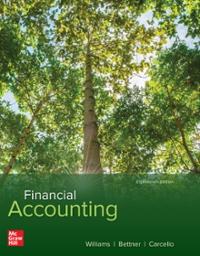



Answer all, the questions are attached below,,1
Mosses Ferns Gymnosperms Angiosperms Support tissues Absent Present Advanced Advanced True leaves Absent Present Advanced Advanced Stems Absent Present Advanced Advanced Roots Absent Absent Advanced Advanced Pollen Absent Absent Present Present Seeds Absent Absent In cone Enclosed in fruit Fruits and Absent Absent Absent Present flowers Water required yes yes No No for fertilization Grouped together, all taxa shown are known as land plants. A group consisting of ferns, gymnosperms and angiosperms are known as vascular plants. A group consisting of only gymnosperms and angiosperms are known as seed plants. Map the characters onto the tree above and answer the following questions. 4. Which trait(s) are symplesiomorphic to vascular plants? 5. Which trait(s) are symplesiomorphic to seed plants? 6. Which trait(s) are synapomorphic to ferns? 7. Which trait(s) are synapomorphic to gymnosperms?The Trektronics store begins each month with 735 phasers in stock. This stock is depleted each month and reordered. The carrying cost per phaser is $26 per year and the fixed order cost is $365. a. What is the total carrying cost? (Do not round intermediate calculations and round your answer to the nearest whole number, e.g., 32) b. What is the restocking cost? (Do not round intermediate calculations and round your answer to the nearest whole number, e.g., 32) c. Calculate the economic order quantity. (Do not round intermediate calculations and round your answer to 2 decimal places, e.g., 32.16.) d. Calculate the optimal number of orders per year (Do not round intermediate calculations and round your answer to 2 decimal places, e.g., 32.16.) e. Should the company increase or decrease its order size? Carrying costs Restocking costs Economic order quantity Number of orders per year Order sizeThe Trektronics store begins each month with 900 phasers in stock. This stock is depleted each month and reordered. The carrying cost per phaser is $31 per year and the fixed order cost is $535, What is the total carrying cost? (Do not round intermediate calculations and round your answer to the nearest whole number, e-g., 32.) Carrying costs What is the restocking cost? (Do not round intermediate calculations and round your answer to the nearest whole number, e.g., 32.) Restocking costs Calculate the economic order quantity. (Do not round intermediate calculations and round your answer to 2 decimal places, e.g.. 32.16.) Economic order quantity 610.55 Calculate the optimal number of orders per year. (Do not round intermediate calculations and round your answer to 2 decimal places, 0.g., 32.16.) Number of orders per year 17.69 Should the company increase or decrease its order size? Increase4. (10 points) Answer any 2 of the following four questions for 5 points each. One of the remaining two may be answered for up to 3 extra credit points. (Use the back page if you need more space) a. What are some activities that haven't traditionally been counted in GDP but which contribute value to the economy, and what are some changes that some countries have recently made in their GDP measurement? (Give the changes and the countries) b. How does recent experience in advanced economies support the Paradox of Thrift as discussed by Paul Krugman in his blog post, using IMF data on economic growth and Investment?Problem 1 (20%). List five intermediate engineering problems related to your specialty area (industrial, Mechanical, Electrical... etc.) that can be assessed using engineering economics (benefit and costs)















